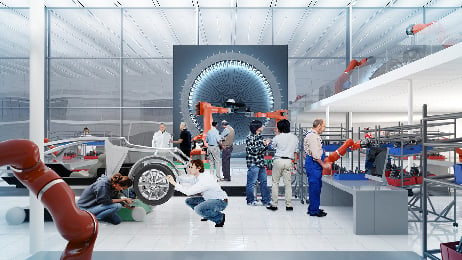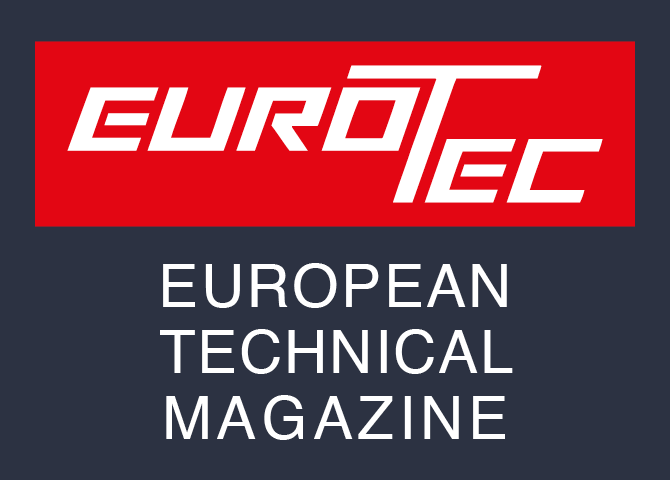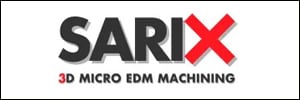Expert interview with Professor Dr.-Ing. Thomas Bauernhansl / Robotics and automation technology on the rise
Robots are taking the production halls by storm and are being integrated in machine tools and automation systems to create plug-and-play modules. The increasing networking and platform connection leads to completely new control architectures. In brief: The world of machine tools is experiencing dramatic development. This will trigger plenty of discussion between exhibitors and visitors at AMB, the international exhibition for metal working, which takes place in Stuttgart from 13 to 17 September. Professor Dr.-Ing. Thomas Bauernhansl, Director of the Institute of Industrial Manufacturing and Management (IFF) at Universität Stuttgart, as well as the Fraunhofer Institute for Manufacturing Engineering and Automation (IPA), encourages people to take the developments seriously and discuss them in an opportunistic manner.

Professor Bauernhansl, robots are taking the production halls by storm. Are robots becoming competitors to machine tools? A robot still cannot replace the machine tool. The robot can only assume non-core processes of the machine. Examples include handling activities, or supporting and accompanying the employee who operates the machine. Typical tasks are deburring, positioning or changing workpieces. But the robot will not do the actual machining or metal cutting, because it doesn’t possess the required accuracy or dynamics. In the future, however, the transition between machine tool and portal robot could become more fluid. Its flexibility and the extremely advanced possibilities of programming speak in favour of robots. The machine tool is increasingly converging with the robot, they no longer stand side by side as separate components.
How is automation technology in the field of machine tools generally developing? We are noticing that the machine tool competence among automation manufacturers is increasing. They are optimising the layout and system design. The topic of flexibility plays a huge role, i.e. the question of scalability from manual to semi-automated to fully automated and vice-versa. This restricts the integrative approach again somewhat. Components of machine tools must be able to be replaced quickly. For instance, integrating robots or palletising systems quickly and also removing them again. It is not only about versatility and adaptability, but also about efficiency, i.e. the topic of plug-and-produce by the machine operator.
The control technology also has to be adapted. What changes will we experience here? The classic control technology of the machine tool is heading towards plug-and-produce. Hard-wired hardware-based NC systems no longer have a future. For plug-and-produce the respective components need to be more intelligent, i.e. in the robot arm, gripper, spindle, feed conveyor, etc. These autonomous systems have their own microcontrollers and register on a platform via an interface. They communicate what services they provide, and the employee at the machine can then configure it to a smart workflow. With the ever-increasing bandwidth and latency of the networks, one can outsource services from the machine tool and offer them, for example, on cloud-based platforms. In the end only a few tasks such as security are still performed locally. Functionality as a service is a big trend.
How does automation technology deal with diverse requirements due on the one hand to mass production, and on the other to increasing individualisation of the products? There will always be mass production, but increasingly the customised product, which is adapted to the individual needs of the customer. The automation of mass production is very advanced. Here it is not only about making the processes more robust through the clever use of data and retrieving the very last percentage. In contrast, customisation demands a high degree of flexibility, i.e. the ability to convert within seconds or even during the process. These topics require a different type of automation technology with corresponding adaptability and versatility, perhaps in the future the ability of independent optimisation in communication with the component.
A question which will also be discussed with great controversy at AMB: Where is Germany on an international comparison? This topic is gaining considerable momentum in the USA, Japan, Korea and now also in China. In Germany we need to take this development seriously and deal with the issue intensively. The surveys are alarming, on the one hand 80 to 90 percent of companies state they are affected by the development, but only between ten and 20 percent of these companies are giving serious thought to the matter. We have to do more, become more determined and more companies have to get involved in the development. Above all we need to discuss the matter in an opportunistic manner and not only analyse the risks.
Robots at AMB The manufacturers ABB Automation (Stand 5D32), Erowa System Technologies (Stand 7C77), Fanuc Germany (Stand 7B51), Kuka Roboter (Stand 8A69) and Mitsubishi Electric Europe (Stand 5D74) present their latest generations of robots at AMB in Stuttgart. Over 30 exhibitors showcase handling and automation solutions with robotics.





















